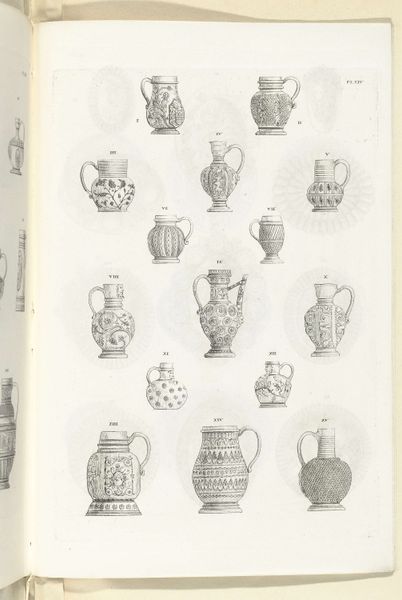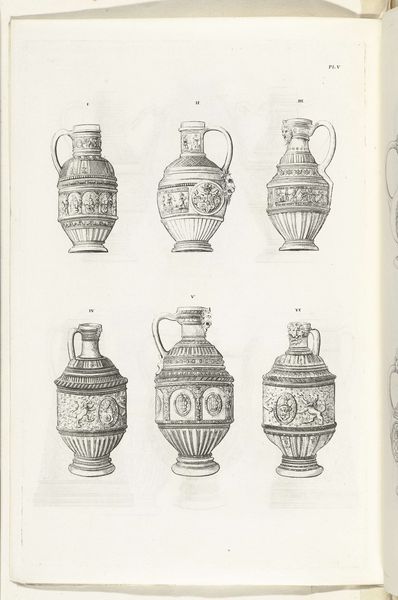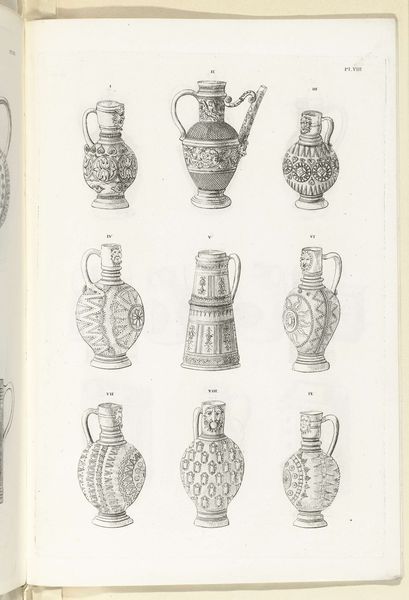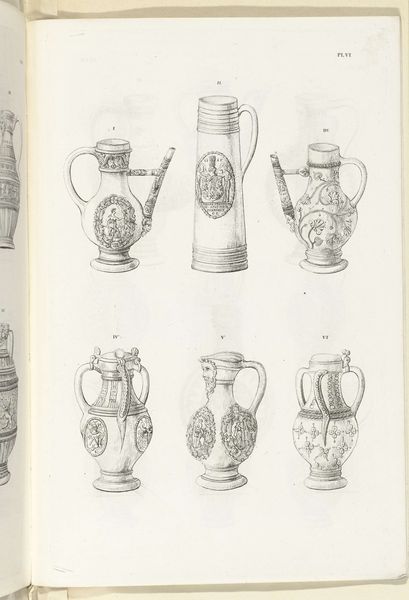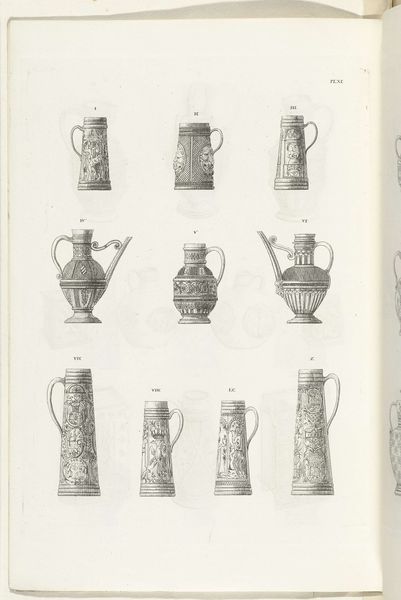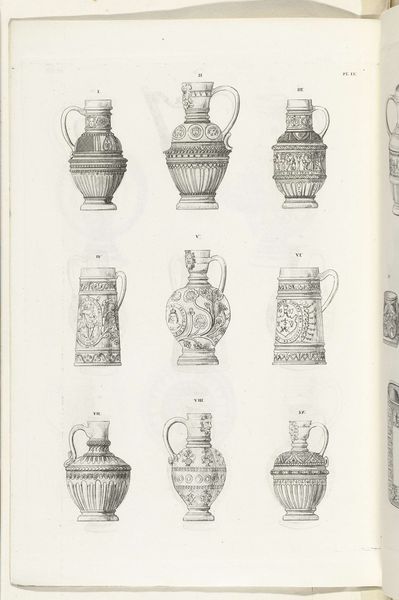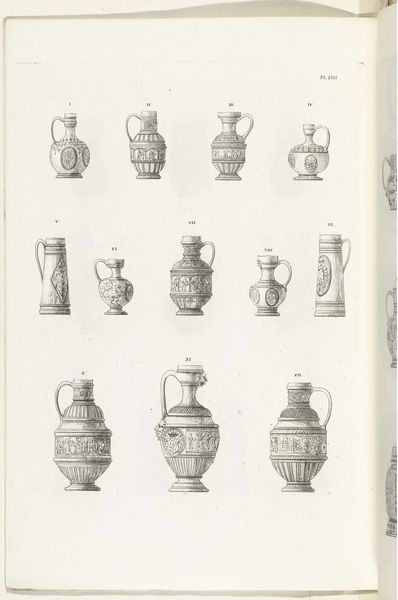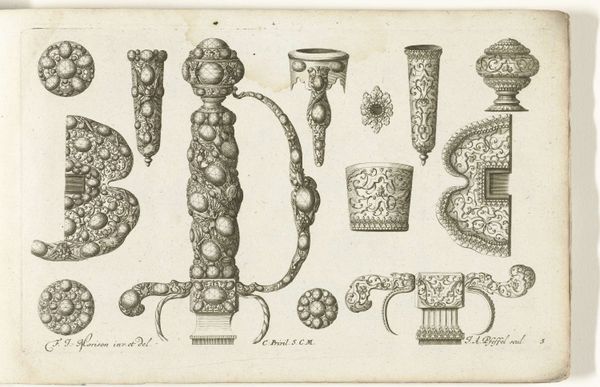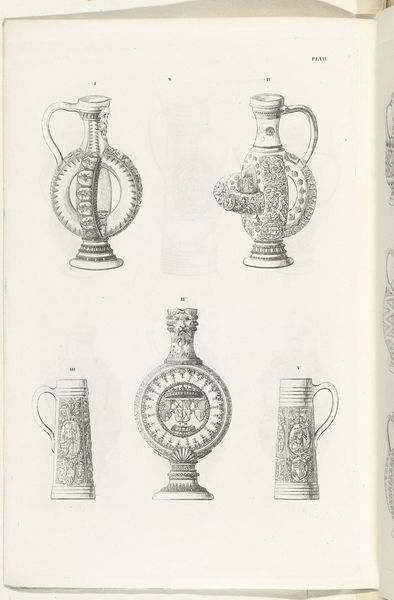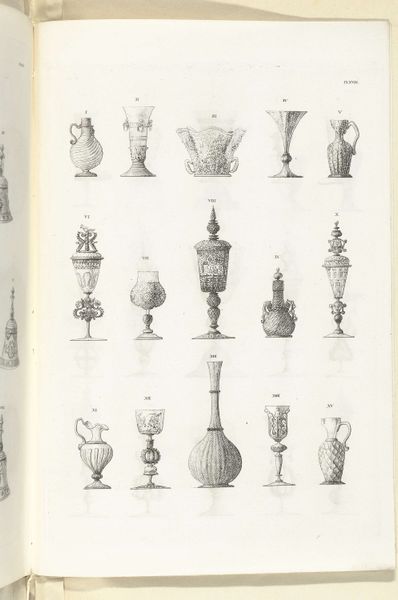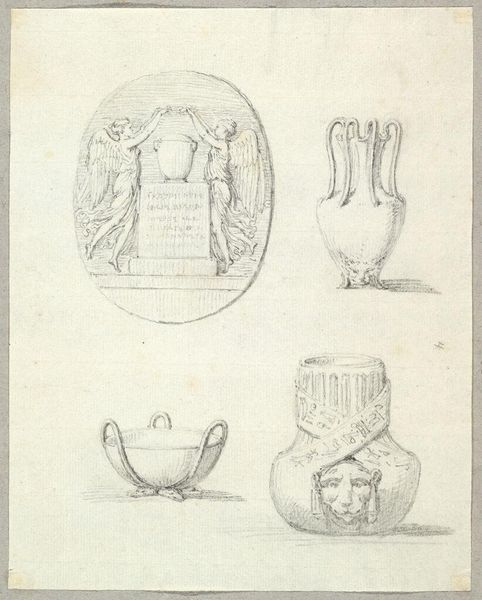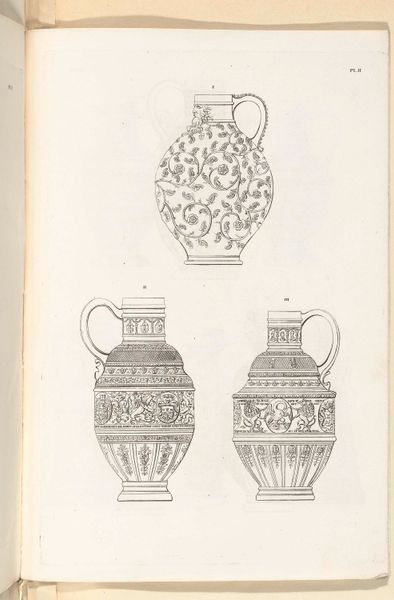
drawing, print, ink, engraving
#
drawing
# print
#
vase
#
ink
#
geometric
#
decorative-art
#
engraving
Dimensions: height 220 mm, width 160 mm
Copyright: Rijks Museum: Open Domain
Curator: Here we have “Kannen van steengoed, plaat X,” or “Stoneware Jugs, plate X,” created by Charles Onghena between 1827 and 1829. This work, executed as a drawing and engraving, showcases a series of decorative vessels rendered in ink. Editor: What strikes me immediately is their muted elegance—the greyscale rendering against the stark white page presents a quiet but persistent grandeur. The compositions highlight an aspirational and likely exclusionary display of wealth and fine taste. Curator: Exactly, and it's crucial to examine the composition. Onghena meticulously depicts the vessels in varied sizes and forms—note the careful balance of light and shadow achieved through engraving. We must decode these formal choices, observing the linear perspective and the delicate intricacy. Each vessel exists as an example of perfect geometrical order, revealing subtle aesthetic features that harmonize perfectly in the artistic plan. Editor: Yet, considering Onghena’s context, it is relevant to ask, for whom were these designs intended? While visually compelling, we need to examine the socio-political dimensions implicit within these symbols of wealth. Who had access to these decorative items? Where and by whom were such vases crafted? Such questions force us to think about social standing and the historical dimensions surrounding art’s reception and purpose. Curator: Those considerations bring up valid, external connections. But let’s focus, too, on Onghena’s mastery in deploying a subtle tonal range through various meticulous marks—the engraved strokes forming dense areas, then thinning, achieving volume and depth. His method transforms utilitarian objects into abstract geometric ideals. Editor: Right, and in unpacking Onghena’s technique we cannot forget that this artistry also participates in the historical exclusion of craftspeople, typically people of color, whose contributions are regularly erased to valorize white creative genius. Looking at these vessels, I consider whether those who materially create such objects might find agency in creatively subverting the established social order that art, like Onghena's, reinforces. Curator: I find this piece thought provoking in that its austere presentation invites consideration of aesthetic purity. Its simplicity and refined rendering underscores beauty found in basic structural forms, establishing these vases as exemplary artifacts of design. Editor: Yes, Onghena’s illustration stimulates thoughts that reverberate across art and socio-cultural issues. I'm left to consider the historical structures around artistry, craft, wealth, and power... aspects which invite contemplation beyond mere aesthetic appreciation.
Comments
No comments
Be the first to comment and join the conversation on the ultimate creative platform.
